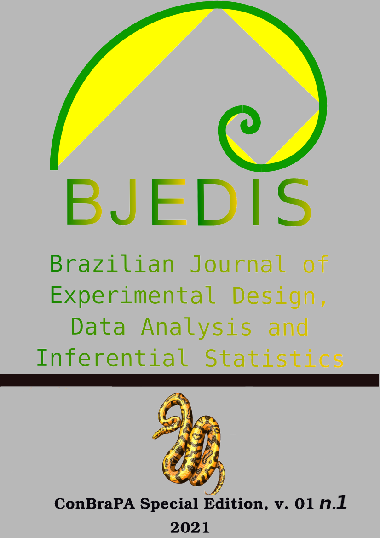LED Light Integrated Reactors: Study of the Methylene Blue Chemical Oxidation Process
DOI:
https://doi.org/10.55747/bjedis.v1i1.48413Keywords:
Advanced Oxidative Process, Visible Light, LED, Persulfate, Methylene Blue, Continuous Process, Experimental designAbstract
The contamination of water by organic dyes, such as methylene blue, is a risk factor for the environment, since all aquatic fauna and flora are immensely affected due to the reduction of the amount of dissolved oxygen and the passage of light, affecting the photosynthesis. The main source of contamination comes from the textile industry, so it is necessary to study efficient techniques for treating effluent without the cogeneration impact. In the present work, a study was developed to evaluate the best combination of factors of a batch treatment to be applied in a continuous treatment system. The removal of methylene blue by chemical oxidation was evaluated using sodium persulfate as an oxidizing agent. A complete experimental design 23 was devised to evaluate the effects of the activation of the oxidizing agent by iron sulfate (II) and visible light (LED), these being the factors. After this batch step, the tests that were efficient in degrading the contaminant were carried out in the continuous reactor. The degradation results showed that, in batch, the oxidation with activation of sodium persulfate by iron sulfate (II) is more efficient, removing 91.2% of the dye in 20 minutes. In the continuous reactor, activation with a visible light source showed greater conversion due to its greater contact surface with water contaminated with dye, removing 59.2% over 15 meters from the reactor and residence time of 109 seconds.
Downloads
Downloads
Published
Issue
Section
License
AUTHORS’ DECLARATION AND COPYRIGHT TRANSFER AGREEMENT
The undersigned authors hereby declare that the submitted manuscript is an original work and has not been previously published or submitted, in whole or in part, to any other journal. The authors further commit not to submit this work to any other journal while it is under consideration by BJEDIS.
We affirm that the manuscript is free from plagiarism, and we accept full responsibility for any allegations of academic misconduct that may arise.
By submitting this manuscript, the authors irrevocably transfer all copyrights of the work—including, without limitation, the rights of reproduction, distribution, translation, and public communication in any form or medium—to BJEDIS. Any breach of this agreement may result in legal action in accordance with the Brazilian Copyright Law (Law No. 9.610 of February 19, 1998).
The authors also declare that there are no conflicts of interest related to this work. All sources of financial support have been properly acknowledged in the funding section of the manuscript.



